Today, it isn't easy to imagine that Széll Kálmán Square, one of the transport hubs of Buda, was once a clay mine. In the winter, the public in Buda skated on the mining lake formed on the factory site, which was closed in 1892. At the beginning of the 20th century, it became a sports centre in the area, with tennis courts and a changing room.
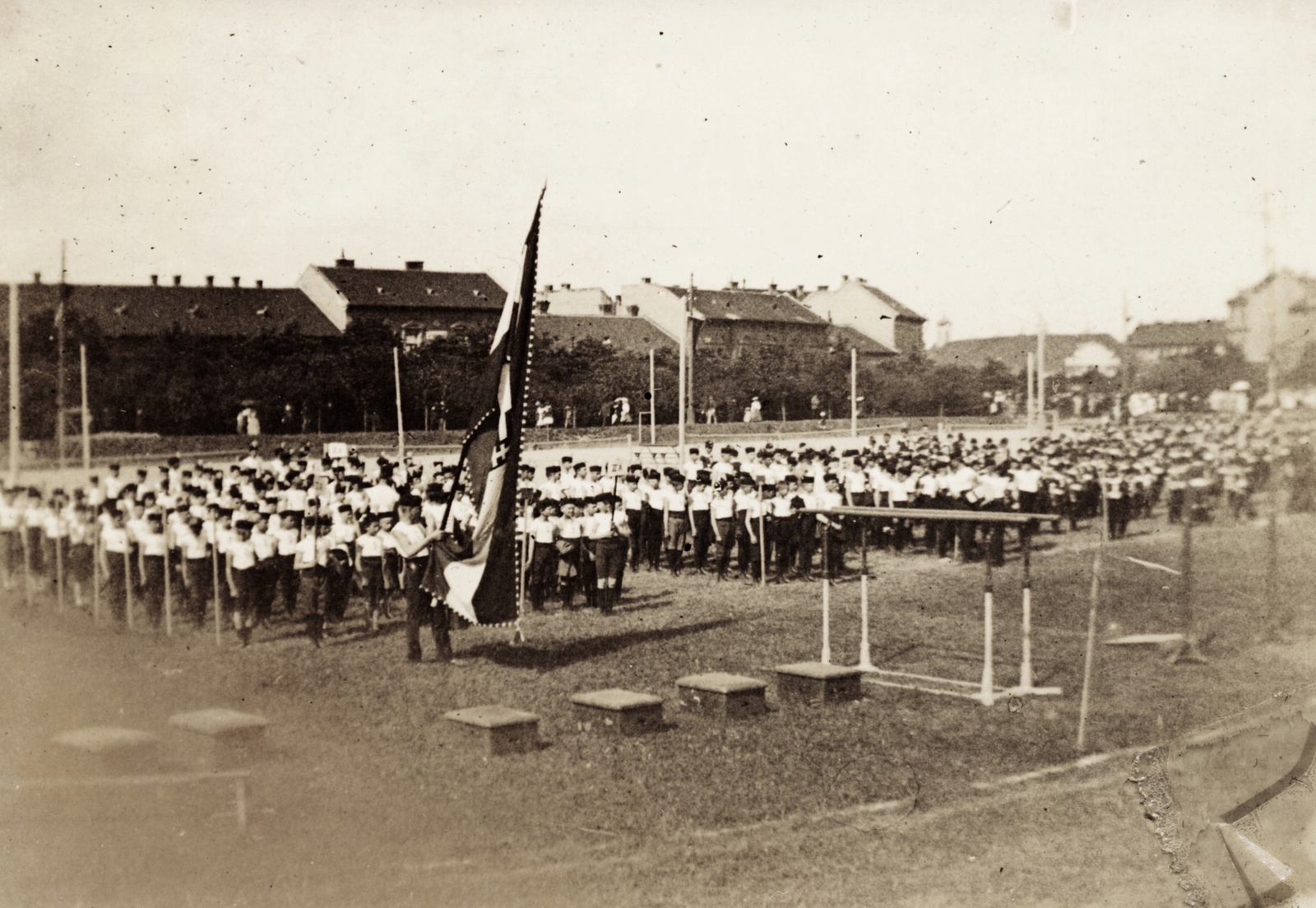
There was once a sports field on the site of Széll Kálmán Square; the recording was made in 1906 (Source: Fortepan/No.: 115856)
The trams only affected the area at the time, which from 1929 was called Széll Kálmán Square. The plan to build a transport hub appeared in the 1930s, as the square is an intersection of important transport routes. Trams and the Buda railway tracks, which were of special importance due to the contemporary freight transport, crossed the square, connecting the Déli (Southern) Railway Station with Óbuda and the Újpest railway bridge. The circular railway was built in 1938, partly in preparation for the war, which meant that the tennis court and clubhouse of the Budapest-Buda Gymnastics Association (BBTE) had to be demolished.
The area thus became suitable for the development of a transport hub through which tram and bus services from the 12th District (Hegyvidék), the Outer Ring Road and the southern part of Buda could be connected.
Construction began in 1939. During the works, not only a new tram terminal was built on the site of the former sports fields, but the incision leading to the Vérmező and the tunnel here was also completed, which was the work of Pál Sávoly, the designer of the Erzsébet Bridge. It was also when the pedestrian overpass was built, which until the last reconstruction was a defining element of the square.
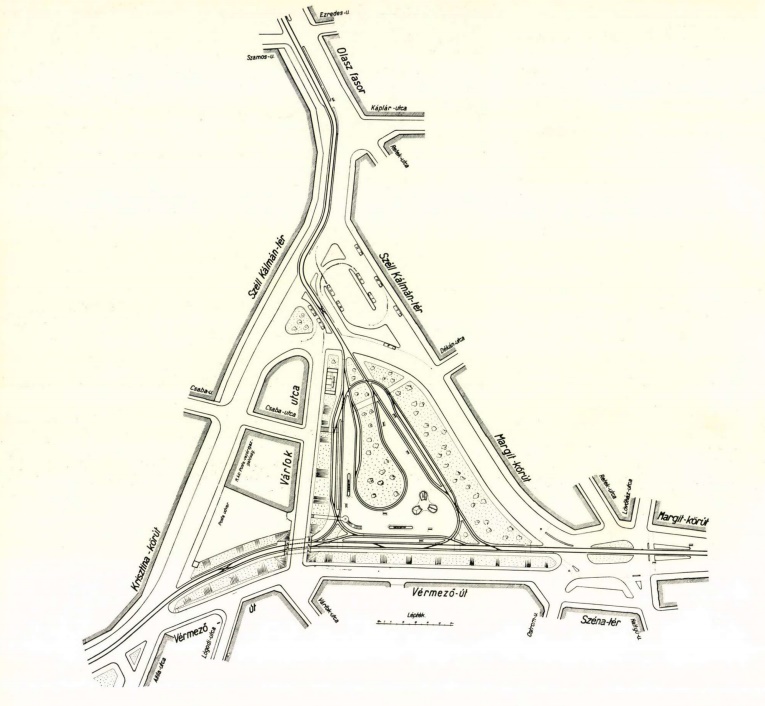
The plan of the square in 1941 (Source: Magyar Építőművészet, July 1941)
Two waiting halls for 100 people each and a sales pavilion were built on the square, which István Zlinszky described in the 7th issue of Magyar Építőművészet in 1941:
“The sales pavilion is a three-leaf clover-shaped structure with an IBUSZ sales booth, a tobacco exchange, a control room, two telephone booths, a men’s, and a women’s toilet in one wing, a heated waiting room in the other wing and with a Stühmer confectionery and café in the third wing. The three wings are connected by a circular open hall with a glass-concrete dome. In the middle of that, there is a flowerpot and a drinking fountain made of Budakalász limestone. The plinth of the buildings is made of polished and varnished Ruskica marble, the lower edge is made of Budakalász limestone, the upper part is glass between the iron frame.”
The buildings were designed by Pál Hanák, who was selected through a tender. In the factory building, the social rooms of the staff and a shelter were built due to the war, although Hungary was not at war at the time of construction.
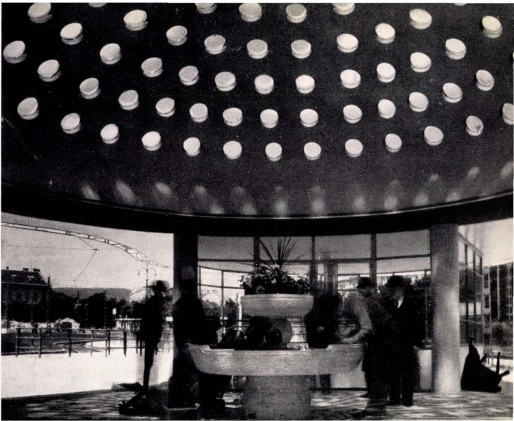
The central dome of the hall (Source: Magyar Építőművészet, July 1941)
The square was not only one of the junctions of the tram network, but it was also possible to transfer to many buses here. The tram and bus terminals built at that time were already designed according to the principles of right-hand traffic.
A total of nine tram lines ran through the square in 1941, many of which terminated here, including tram 6, but trams 61 and 59 also started from here (until the last reorganization). At the time, the vehicles circled the square in large loop tracks, practically a roundabout was formed, from where the trams could continue in all directions. This complicated system was needed because the trams at the time did not look like they do today: many had a driver's seat only at one end.
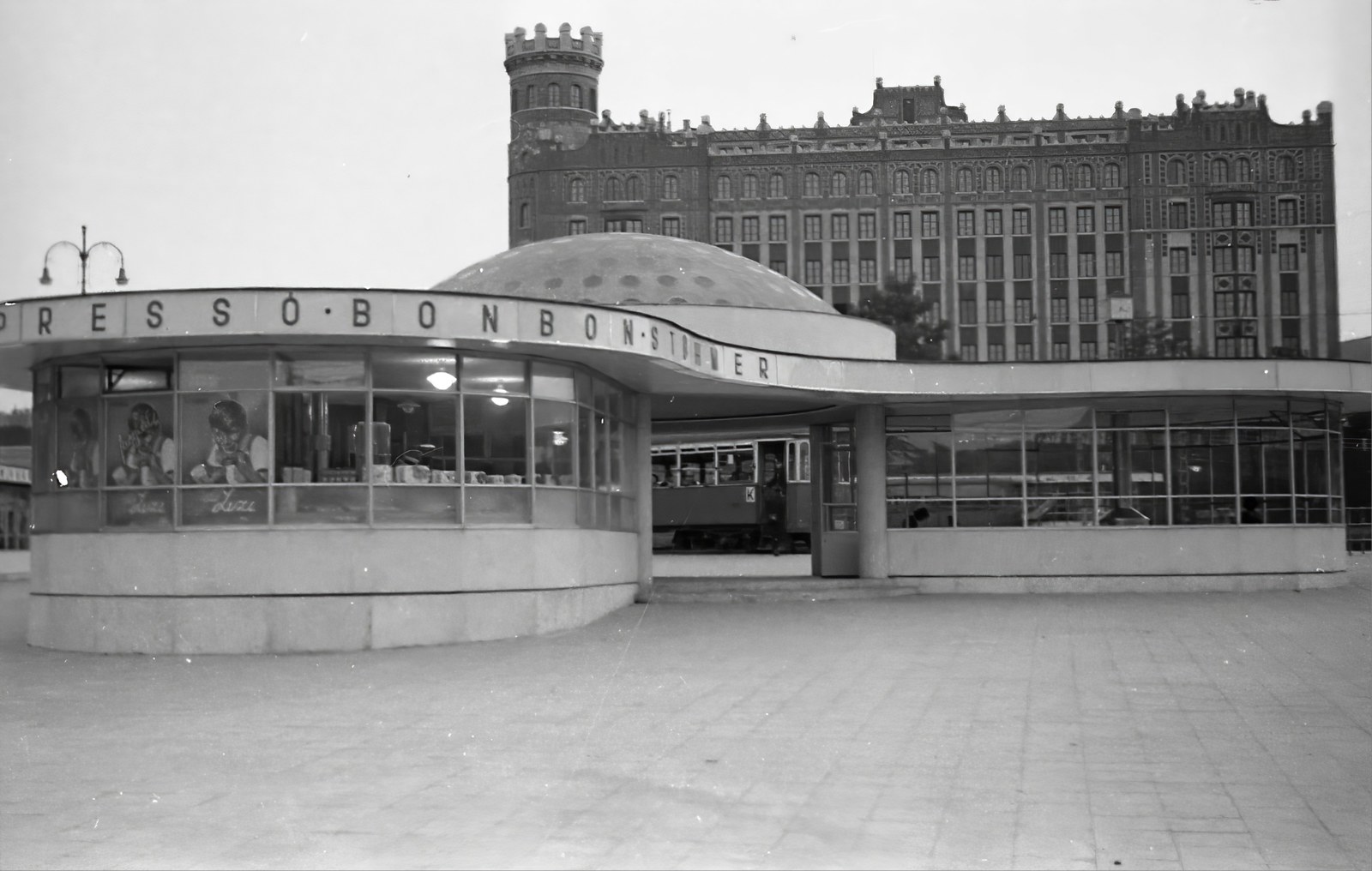
One of the pavilions of Széll Kálmán Square in 1941 (Source: Fortepan/No.: 174343)
The reconstruction was completed 80 years ago, on 16 June 1941. It was then that the square was handed over, but not everyone was delighted. It had already aroused resentment that the sports centre here has been closed down, and after the opening, many expressed their indignation that another asphalt desert has replaced the green space. However, during the construction, they tried to leave as much space as possible for the plants, as the article already quoted said:
"In order to make the square more beautiful, the areas that are not used by the public have been gardened and the beautiful green surfaces effectively divide the surface of the square."
The importance of tram transport and thus the square increased during World War II, as the electricity network was also used more actively for freight transport due to the lack of rubber. During the siege of Budapest, the square suffered severe damage. Under the reconstruction, first, the transport and freight facilities were restored, the passenger waiting room was renovated by 1947.
Then the first major remodelling took place during the construction of the metro line. Because of its surface waiting hall, the old “mushroom” building had to be demolished. The smaller green island and the loop track still survived in the middle of the square, although the latter became increasingly irrelevant.
The capital had planned for decades to rebuild the transport hub (called Moszkva Square from 1951 to 2011), which happened in the past decade. Just five years ago, in June 2016, the new Széll Kálmán Square was completed.
Cover photo: Moszkva Square (formerly Széll Kálmán Square, which got its original name back in 2011) in 1952 (Source: Fortepan/No.: 129401)

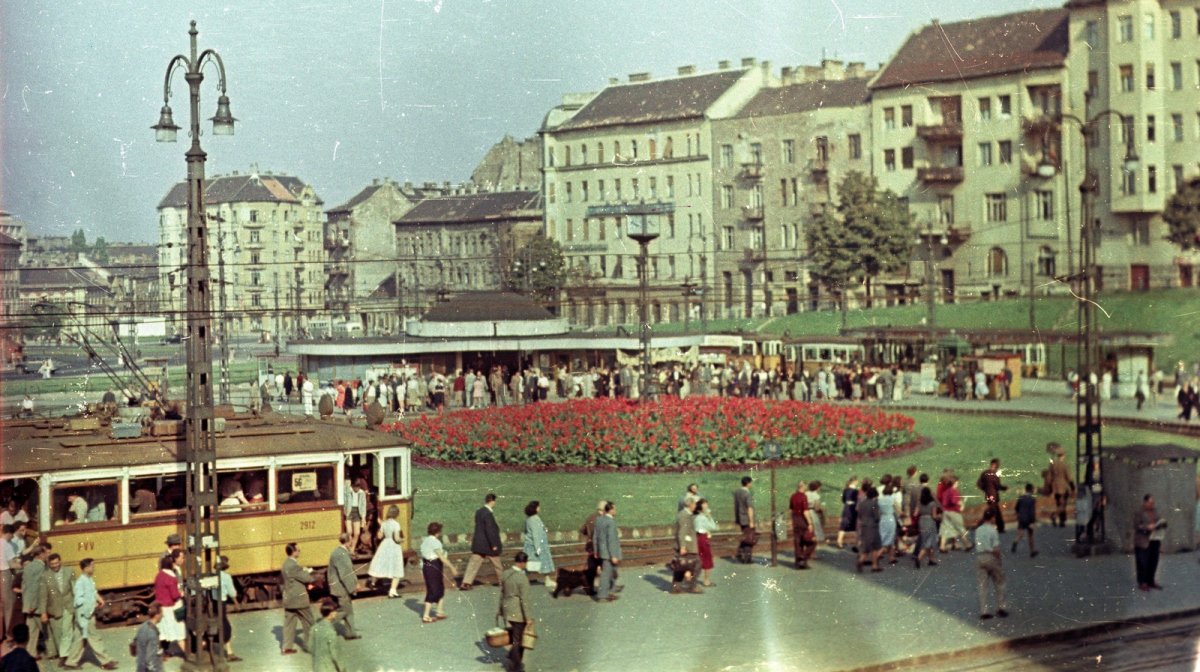



































Hozzászólások
Log in or register to comment!
Login Registration